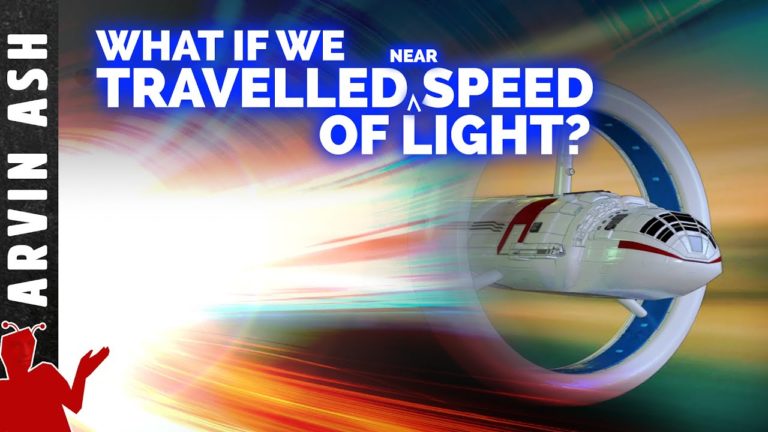How Would the UNIVERSE LOOK near the SPEED of LIGHT?
All the light that we see are electromagnetic waves. All different wavelengths are equivalent, except that waves of higher frequencies are more energetic. The speed of all these EM waves, however, is the same. It’s the maximum speed allowed in the universe.
This speed limit sets the max rate at which information can flow in the universe. This assures that causation is preserved. Einstein showed that the world would look very different as you near this speed. We don’t see this because our terrestrial speeds are very low compared to the speed of light.
What would happen if we traveled closer to the speed of light? Strange things.
When an ambulance approaches you, the wavefront made by its siren gets packed together towards the direction of movement. This causes a higher pitched sound. Similarly, the wavefronts get further apart in the opposite direction. This results in a lower frequency sound. This is the doppler effect.
Something similar happens with light. As seen from earth, most galaxies are redshifted, thus the wavelength is stretched. The galaxies are moving away from us. This is called the relativistic doppler effect, and it happens thanks to relativity. If we built a fast spaceship that traveled near the speed of light, this effect will change how you see the world compared to person who is not moving!
A red traffic light at 25% the speed of light we would be seen as green. If we moved away from the red light at 25% the speed of light, we wouldn’t see it at all because it would be infrared, something our eyes can’t see.
This also means that infrared light that we currently can’t see in the cosmos would become visible in the front window of our spaceship.
Likewise, natural high energy ultraviolet light which is also invisible to us now, would become visible from our rear window. So we might see unexpected objects and colors both in front and in back our spaceship.
Another effect would be on the side window of the spaceship, called relativistic aberration, or the searchlight effect. From the side, you would not only see the colors distorted, but the light would appear brighter towards the direction of motion, and darker away from the direction of motion. This is because, if you are going very fast forward, then you are racing into more photons.
Special relativity also shows that time and length are also different for a moving observer, compared to a stationary one. At 60% the speed of light, time will slow down compared to a stationary observer, but you will not experience anything different. From your frame of reference, time will tick just like it does on earth.
1 meter for a stationary observer would only be 80 centimeters for the moving observer. This is called length contraction. This SHOULD mean that objects would look squished together. This is what’s happening, but NOT what you will see. Instead, you see objects curving away from you, and rotating towards you. The reason is because the photons from the front of the building are reaching your eyes earlier than the photons in the back of the building, so you see it curved. This is an optical illusion. the object in fact contracted.
This same effect means that spherical objects like earth don’t appear squished like a pancake, even though they are contracted, but remain spherical-looking. But they will appear rotated towards you.
This is again an optical illusion, because in reality the object is contracted. What you will experience is that distances are reduced, so a trip to Proxima Centauri, 4.5 light years away, will only be 3.6 light years.
The interesting thing is that even though things would be closer to you, they would actually look farther away when you viewed them from your front window. Likewise looking out the back window things will appear to be a lot closer.
This seems to be a paradox, but as the spaceship moves faster, length contraction in the direction of motion means that objects on the side of the ship move towards the front. In fact, all the light from the side and even behind the ship would shift forward.
Your field of view increases in the direction of movement and decreases behind the spacecraft. Looking forward in the spacecraft would be like looking through a fisheye lens and looking out in the back would be like looking into a zoom lens.
Do not forget to share your opinion with us to provide you with the best posts !





0 Comments